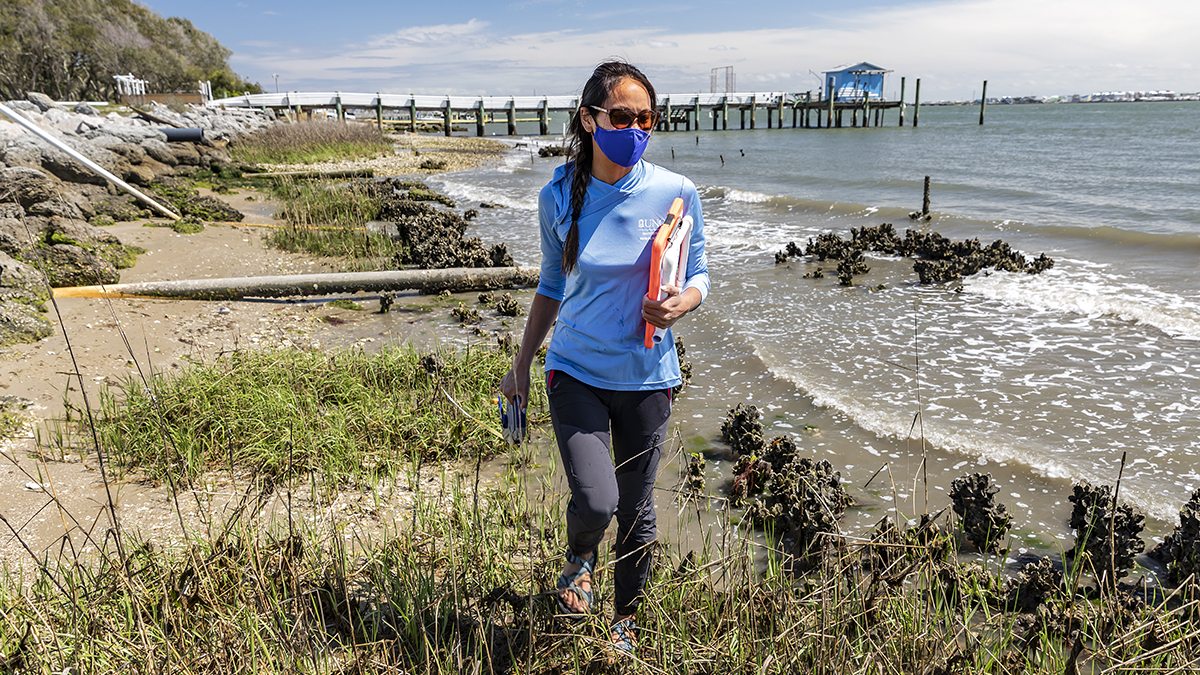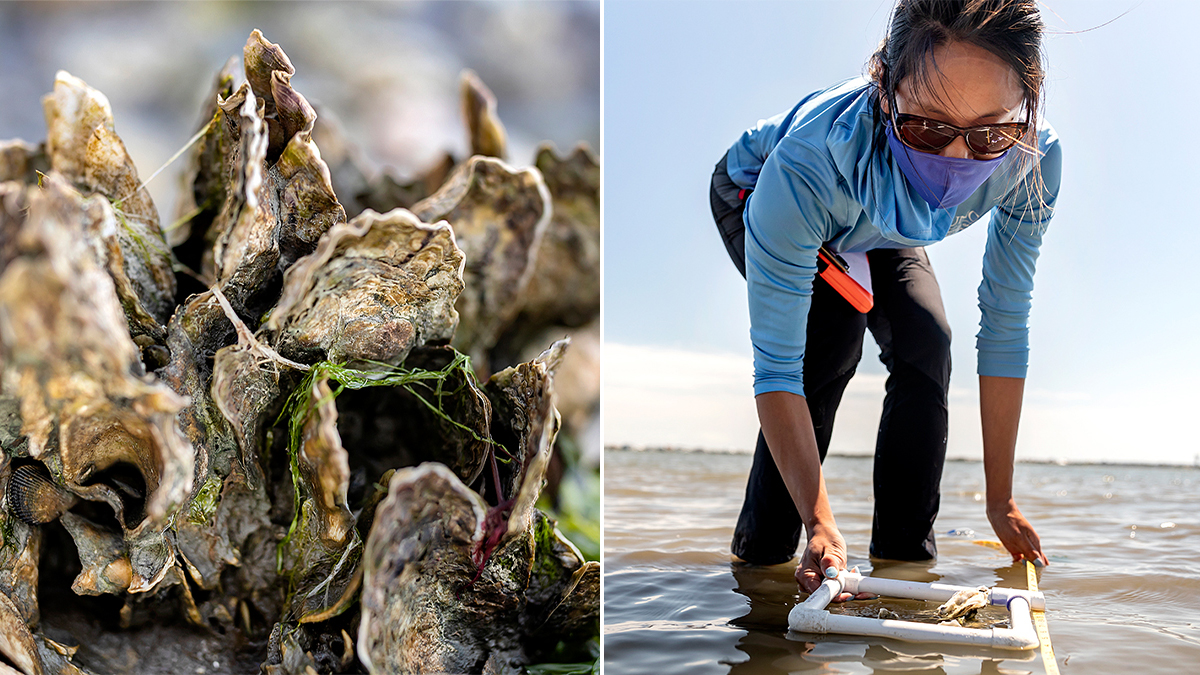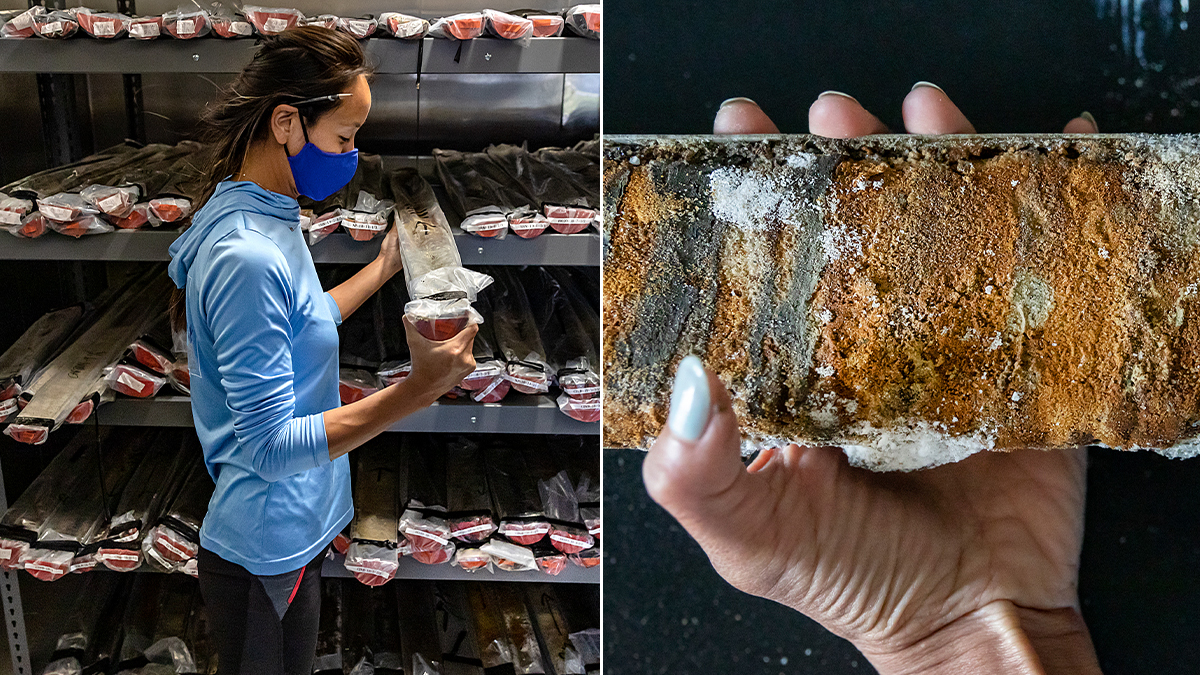How Carolina is reducing its carbon footprint with oyster shells and marsh grass
A project at the UNC Institute for Marine Sciences is serving as a carbon offset for Carolina by burying carbon deposits into the sediment of a saltmarsh created by researchers.

When it comes to helping in the fight against climate change, reducing your carbon footprint is a regularly suggested tactic — both for individuals and organizations.
Researchers at the UNC Institute of Marine Sciences are helping the University do just that with a blue carbon habitat in Morehead City. This human-made habitat collects and stores carbon dioxide from the atmosphere and serves as a carbon emission offset for Carolina, which is aiming to reach carbon neutrality by 2040.
Headed by Professor Antonio Rodriguez, the project involved the creation of a saltmarsh with the intent of capturing carbon and depositing it into the marsh’s sediment along the shoreline near IMS. Initially created in 2014 with 3,500 bushels of shell and 2,000 bundles of marsh grass, the habitat has been tracked for the past seven years to gauge its impact.
Rodriguez is working with fellow IMS faculty members Michael Piehler, Joel Fodrie and several graduate students to collect sediment samples in the area to track carbon deposits and maintain the habitat by monitoring the rise in sea level to ensure the marsh’s protective oyster reefs continue to grow.
“When the call for proposals from the UNC Energy Services’ Climate Action Plan came out in 2012 to make campus more carbon neutral, we jumped at the chance to transform our shoreline into a more natural state,” Rodriguez said. “It ended up being a massive group effort with students, faculty and technicians working together, hauling oyster shells and planting marsh grass. The result has truly exceeded our expectations.”
Continue reading to see the project in action

Rodriguez and Piehler, a professor at IMS who also serves as the director of the UNC Institute for the Environment and Carolina’s chief sustainability officer, are working together on the project. Rodriguez proposed the $50,000 project to help the University achieve its carbon neutrality goals. The saltmarshes, he said, can also serve as an educational tool for students, faculty and the surrounding communities.

Graduate research assistant and doctoral student Molly Bost, who earned her bachelor’s degree in environmental science and master’s degree in marine sciences at Carolina, collects sediment samples on the shoreline by IMS. The samples are later analyzed in the lab to examine how effectively carbon is being deposited in the saltmarsh.
Saltmarshes are “blue carbon” habitats that can store more carbon annually than terrestrial forests, playing a major role in mitigating climate change.

Postdoctoral researcher Stacy Zhang measures the size of oyster clusters on a nearby oyster reef.
To protect the carbon-capturing saltmarsh, IMS researchers constructed two oyster reefs. The reefs act as a natural barrier, protecting the saltmarsh from currents and damaging waves from storms. Since oysters need a delicate balance of being exposed above water and covered by water to maximize growth potential, the team actively monitors the rise in sea level to ensure the reef continues to grow.

Zhang checks a fish trap at the saltmarsh and oyster reef habitat near the IMS shorefront. While the human-made habitat could serve a role in addressing climate change through carbon sequestration, it also creates homes for various sea life, improves water quality and protects the shoreline from erosion.

Back in the IMS labs, Zhang examines a sediment sample to look for signs of an increase in carbon in the soil. The soil samples can show changes in carbon storage over long periods of time.
“It is wonderful that UNC Energy Services had the foresight to fund this pilot project that harnesses our expertise in coastal science and leverages the physical location of our Institute of Marine Sciences to make progress toward meeting our sustainability goals,” Piehler said.




